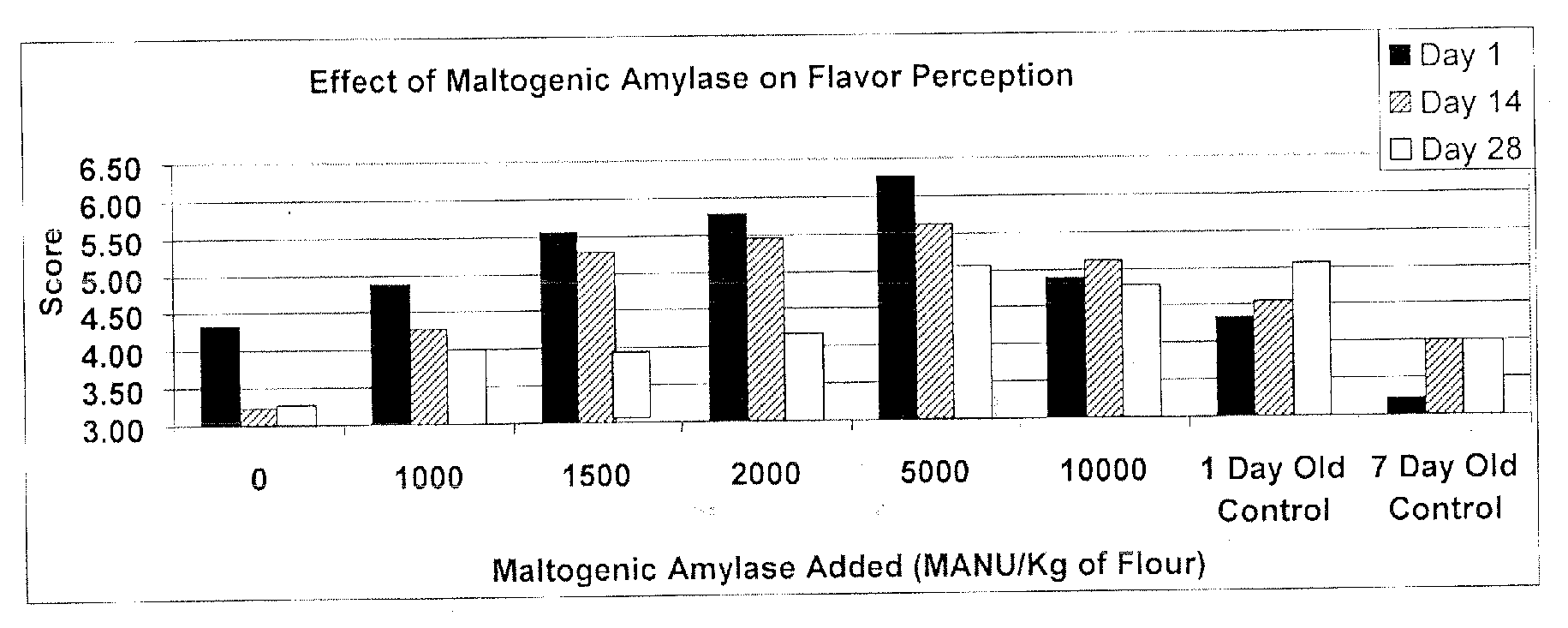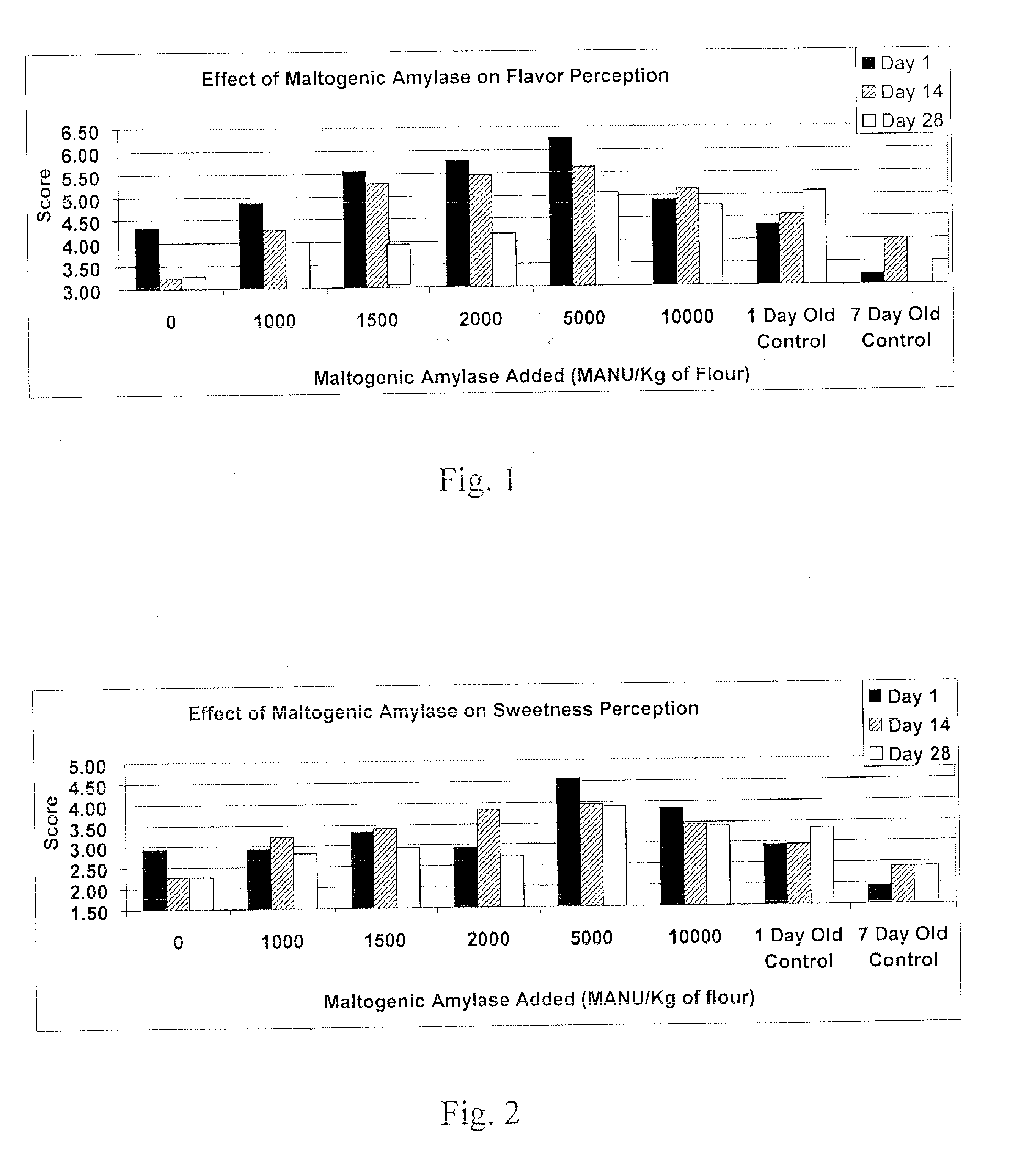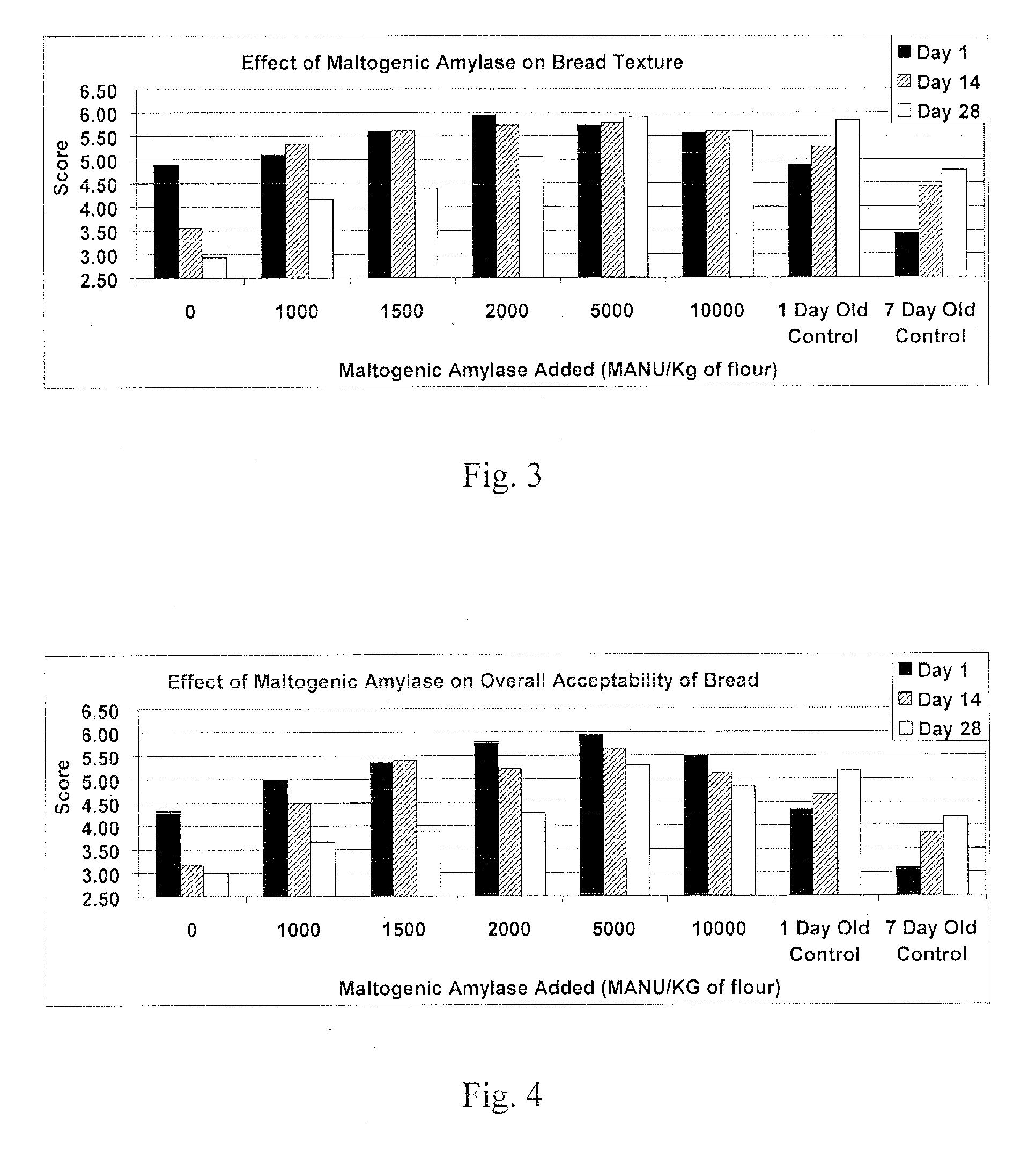Enzymatic dough conditioner and flavor improver for bakery products
a technology of enzyme dough and conditioner, which is applied in the field of enzyme dough conditioner and flavor improver for bakery products, can solve the problems of difficult shape of dough, poor expansion, and excessively strong dough, and achieve the effect of improving flavor and texture, and improving flavor and textur
- Summary
- Abstract
- Description
- Claims
- Application Information
AI Technical Summary
Benefits of technology
Problems solved by technology
Method used
Image
Examples
example 1
Flavor Improvement in Refrigerated Bread
1. Preparation of Bread
[0049]Bread stales most rapidly at temperatures close to 4° C. Impact on texture and flavor degradation is generally considered to be the worst under these conditions. A standard white pan bread formulation was prepared according to the following sponge and dough bread making process. The following ingredients were scaled into a 60-qt. mixing bowl that was fitted with a spiral dough hook: 9.46 lb. bread flour; 0.65 lb. compressed yeast; 0.07 lb. sodium stearoyl lactylate (SSL) (EMPLEX, obtained from Caravan Ingredients, Lenexa, Kans.); and 4.95 lb. of water at 21° C. These ingredients were mixed on first speed for one minute and then on second speed for two minutes in a standard 60-quart, three-speed, upright planetary mixer. This sponge was placed in greased dough troughs for fermentation. The dough troughs with the sponge were allowed to ferment in the fermentation cabinet at 28° C. with a relative humidity of 84.0% fo...
example 2
Bread Volume Improvement by High Maltogenic Amylase Levels
[0058]A test bake was conducted to show that sugar, yeast, soybean oil, and dough strengtheners can be reduced or eliminated, and that water can be increased with no negative side effects as a result of adding maltogenic amylase at 10,000 MANU / kg of flour. The bread was baked according to the procedure described in Example 1. All bread in this Example was stored at 20° C. before texture analysis on day 4 after baking. The bread was evaluated for final baked volume, softness, and crumb adhesiveness. The formulas used for each test are set forth in Table 2.
TABLE 2Test FormulasINGREDIENTCONTROL*TEST 1TEST 2TEST 3TEST 4TEST 5TEST 6TEST 7TEST 8TEST 9TEST 10TEST 11Flour100100100100100100100100100100100100Sugar864444444884Sodium Stearoyl0.50.50.50.50.50.50.5000.50.50LactylateHydrated Monoglyceride222222222222(GMS-90)Salt222222222222Non-fat Dry Milk111111111111Soybean oil333333333211Azodicarbonamide40 ppm40 ppm40 ppm40 ppm40 ppm40 pp...
example 3
Production of High Maltose Levels in Baked Bread Using Maltogenic Amylase
[0062]Bread was made according to the formula and procedure described in Example 1. The control contained no maltogenic amylase, and the test contained 10,000 MANU / kg of flour (again, NOVAMYL). The bread was analyzed for sugar content, and those results are shown in Table 4.
TABLE 4Effect of Maltogenic Amylase on Sugar Level in Baked BreadTYPEOF SUGARWEIGHT % - CONTROL*WEIGHT % - TEST 1*Maltose0.485.37**Fructose2.041.99Sucrose00Glucose00Lactose00Total Sugars2.527.36Fructose Basis2.284.67*Based upon the total weight of the bread.**Translates to about 8.66% maltose on a dried solids basis.
[0063]The starling formulations for the control and Test 1 contained the same amount of sugar. However, after baking, Test 1 contained nearly three times as much total sugars as the Control and was judged to be significantly sweeter. On a fructose sweetness basis, considering fructose is approximately three times as sweet as malt...
PUM
 Login to View More
Login to View More Abstract
Description
Claims
Application Information
 Login to View More
Login to View More - R&D
- Intellectual Property
- Life Sciences
- Materials
- Tech Scout
- Unparalleled Data Quality
- Higher Quality Content
- 60% Fewer Hallucinations
Browse by: Latest US Patents, China's latest patents, Technical Efficacy Thesaurus, Application Domain, Technology Topic, Popular Technical Reports.
© 2025 PatSnap. All rights reserved.Legal|Privacy policy|Modern Slavery Act Transparency Statement|Sitemap|About US| Contact US: help@patsnap.com



